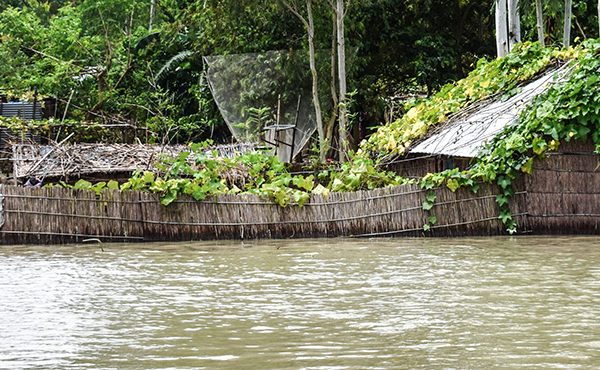Reading Time: 3 minutes
Bangladesh is largely an agricultural-based economy. According to the World Bank, almost half of all workers are directly employed by agriculture. The sector is credited with greatly reducing the country’s poverty rate due to rapid growth.
Despite this, and despite transitioning into the middle-income status, Bangladesh has one of the highest rates of malnutrition in the world. Recognising the importance that agriculture plays in improving nutrition, Leveraging Agriculture for Nutrition in South Asia (LANSA), a consortium of six organisations including BRAC, was formed in 2012. As a research partner, BRAC aims to nudge and contribute to policies in order to establish agriculture-nutrition linkages, and improve nutrition in Bangladesh.
This week, key research findings from a study led by BRAC were highlighted at a concluding seminar.

Barnali Chakraborty, a researcher at BRAC, shared that nutrition progress has stalled post-millennium. She attributed this to knowledge gaps – one being gender.
Bangladesh now faces a double burden of under-nutrition and over-nutrition, particularly among women. Yet, women are important decision-makers, influencing crucial intra-household making decisions. The status of women in agriculture affects a family’s expenditure on food, health, education, child care practices and a woman’s own health. “Women are more likely to attend training sessions, and act on what they learn. Therefore, women must be empowered to make decisions that improve nutritional outcomes,” explained Chakraborty.
Another knowledge gap is between agricultural income and food purchases. Although per capita income has increased, it has not translated into the consumption of nutrient rich, diversified foods “Bangladesh is still heavily reliant on a rice and wheat based diet, which is micronutrient poor,” said Dr Lalita Bhattacharjee, a senior nutritionist at the Food and Agriculture Organisation (FAO). Leafy vegetables offer good returns. They are cheap and micronutrient rich, which raises the importance of crop diversity. Bhattacharjee said that families growing mangoes, papaya and drumsticks would have their Vitamin A needs met. A lack of Vitamin A is the leading cause of preventable blindness in children. Nutrition education and cooking demonstrations, where communities are taught how to diversify diets, were seen to have positive impact on nutrition outcomes.
What does it take to change age-old practices? Dr Mahfuza Rifat, programme head of nutrition at BRAC’s health, nutrition and population programme, elaborated on the current efforts to change behaviours. Her programme works in 141 sub-districts, reaching 33 million people. “We found that inter-personal counselling by our community health workers work best to change behaviours.” However, she warns that health education on its own is not sufficient. “We need multi-sectoral collaboration. Nutrition is not just related to education and counselling. It’s linked to a mother’s education levels, food security, water, sanitation, and hygiene.”
This is in line with the research findings that show economic growth and expansion in education, especially for girls, are the two biggest drivers of nutritional change, followed by roughly equal contributions from sanitation, health care, and family planning.
Food security is particularly related to populations living in flood-prone and coastal environments. The recent studies show that children living in wetlands (haors) are 1.5 times more likely to be stunted, while women in these areas are 1.5 times more likely to be underweight. Wasting – the deterioration of muscle – is more prevalent as well. Families in flood-prone and coastal areas also earn 16-19% less per capita than those from the rest of the country. These areas are more vulnerable to climate change, the biggest threat facing the agricultural sector.
Challenges are great, but not insurmountable. Dr Imran Matin, executive director of BRAC Institute of Governance and Development, said “Business as usual won’t help tackle the challenges. We need a game changer like the LANSA project which served as the diagnostic, and helped us understand the context. The next step is to come up with intervention models based on rigorous evidence.”
Dr Matin stressed on understanding of the role of information, incentives and behaviour, and the use of technology to implement a targeted, personalised approach.
With a creative, enabling environment, said Bhattacharjee, the road to success looks positive.
Bibi-Aisha Wadvalla is a communications manager of BRAC’s health, nutrition and population programme.





